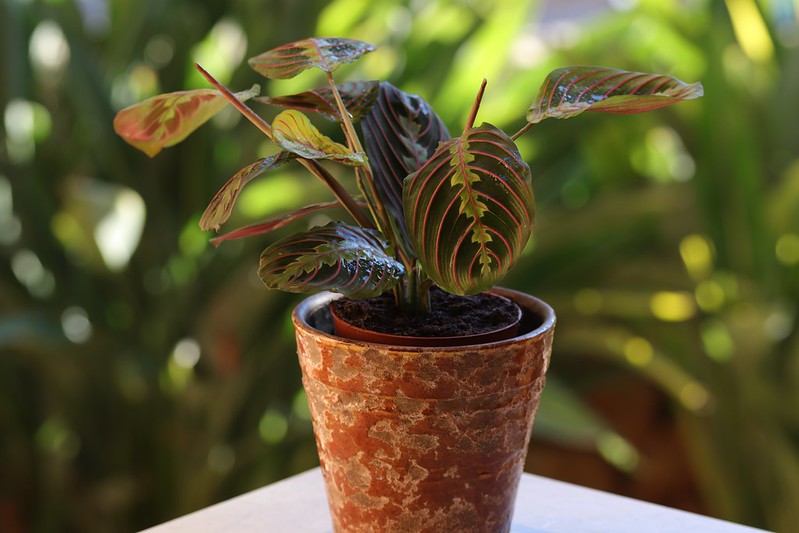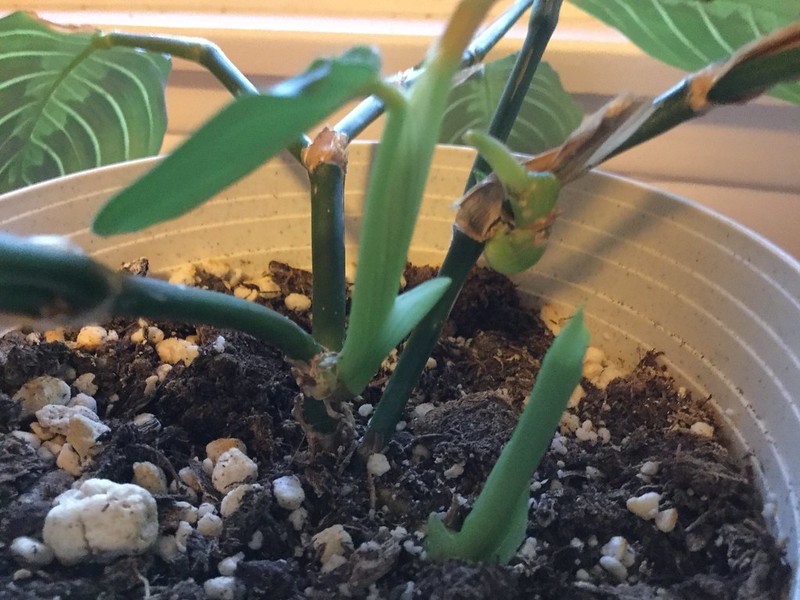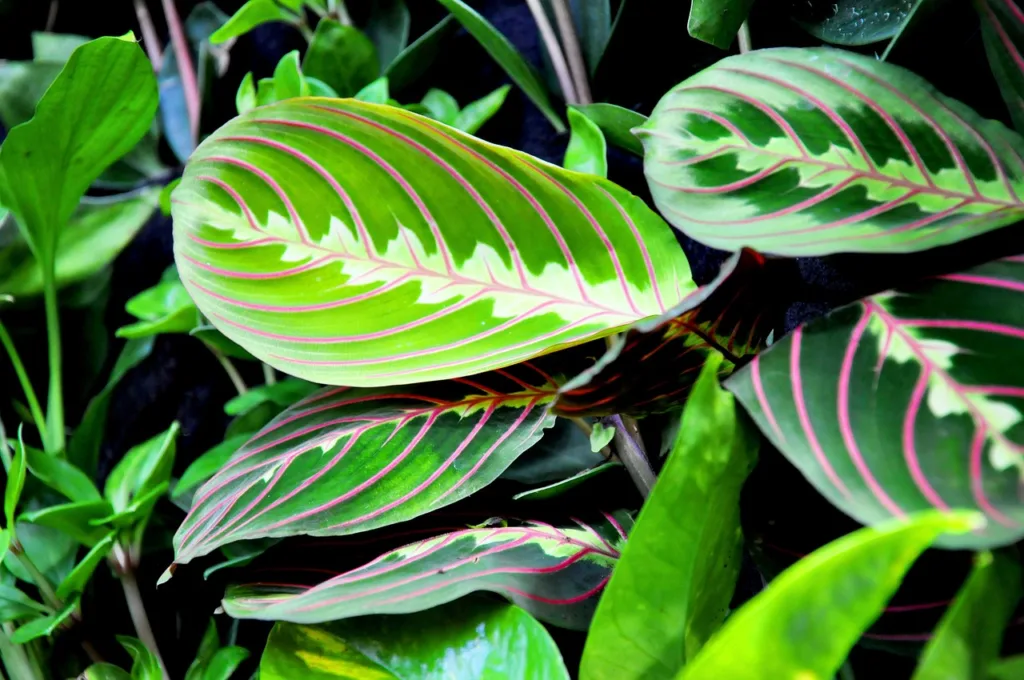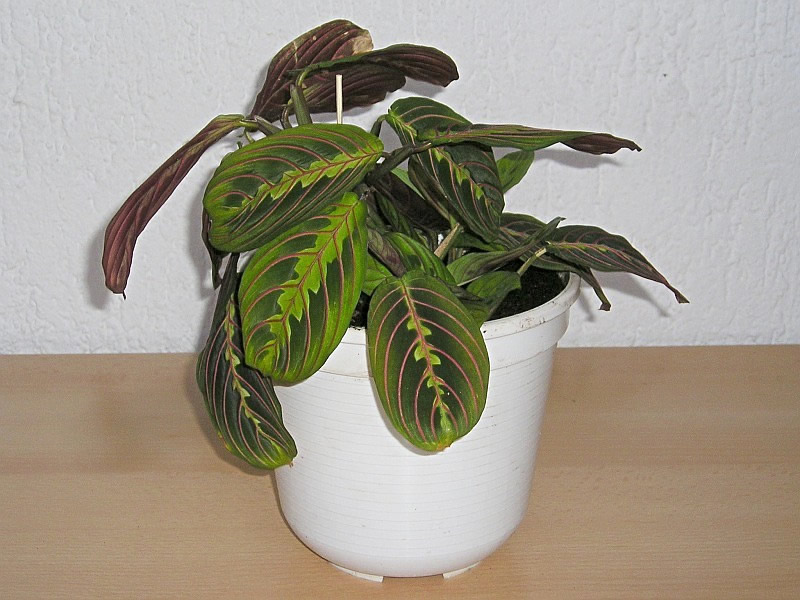Maranta leuconeura, commonly known as the “prayer plant” or “red prayer plant,” is a popular and decorative houseplant is a stunning tropical plant that has gained considerable popularity among plant lovers.
It belongs to the Marantaceae family and With its vibrant leaves and unique leaf movements, it adds a touch of beauty and elegance to any indoor space.
If you’re considering adding a Maranta Leuconeura to your plant collection or if you’re a beginner looking for a low-maintenance houseplant, this comprehensive guide will provide you with the information you need to successfully grow and care for this beautiful plant.
| Kingdom | Plantae |
|---|---|
| Division | Magnoliophyta |
| Class | Liliopsida |
| Order | Zingiberales |
| Family | Marantaceae |
| Genus | Maranta |
| Species | leuconeura |
Why is Maranta Leuconeura Popular
Imagine waking up every morning to see the leaves of your Maranta leuconeura gently fold in a unique prayer-like motion, hence the popular name “Prayer Plant.”
Native to the rainforests of Brazil, this evergreen perennial is not only visually captivating but also relatively easy to care for, making it an ideal choice for plant lovers of all levels of experience.
In this guide, we will delve into the various aspects of growing and caring for Maranta leuconeura, including light requirements, watering techniques, humidity needs, soil conditions, propagation methods, common problems, and more.
So let’s get started on this exciting journey of nurturing and beautifying your space with a Prayer Plant.
Types of Maranta Leuconeura
Maranta leuconeura var. leuconeura:
- The classic variety with green leaves featuring distinct patterns of dark veins and lighter markings.
- Commonly known as the red prayer plant, it has red veins on the underside of the leaves.
Maranta leuconeura var. erythroneura:
- This variety is characterized by its vibrant red veins that contrast with the green leaf surface.
- The erythroderma variety is often referred to as the red-veined prayer plant.
Maranta leuconeura ‘Fascinator’:
- ‘Fascinator’ is a cultivar known for its bold and intricate leaf patterns, featuring a mix of green, red, and cream colors.
- The striking foliage adds a decorative element to indoor spaces.
Maranta leuconeura ‘Kerchoveana’:
- ‘Kerchoveana’ is recognized for its silver-green leaves with darker green veins.
- This variety is sometimes referred to as the rabbit’s foot prayer plant.

Care of Maranta leuconeura
Light Requirements
Ensuring the right amount of light is crucial for the healthy growth of your Maranta leuconeura. While they can tolerate different light conditions, they prefer bright, indirect light.
Placing your plant near an east-facing window or a few feet away from a west or south-facing window would be ideal. However, direct sunlight should be avoided as it can scorch the leaves and cause damage.
If your home lacks sufficient natural light, you can supplement it with artificial light sources such as fluorescent lights or grow lights.
Keep in mind that maintaining a consistent lighting schedule is important to prevent stress and promote optimal growth.
Watering Techniques of Maranta leuconeura
Proper watering techniques are vital in ensuring the well-being of your Prayer Plant. Maranta leuconeura thrives in moderately moist soil, but it is essential to strike a balance and avoid overwatering. Before watering, always check the top inch of soil. If it feels dry to the touch, it’s time to water.
Water your plant thoroughly until water drains out of the bottom of the pot, ensuring that all the roots receive adequate moisture.
Empty any excess water from the saucer to prevent waterlogging, which can lead to root rot. Avoid letting the soil dry out completely between watering sessions, as this can cause stress to your plant.
However, overwatering can cause yellowing leaves and other issues, so it’s important to find the right balance.
Humidity Needs of Maranta leuconeura
As a native of tropical rainforests, Maranta leuconeura appreciates high humidity levels. Providing adequate humidity is crucial for the plant’s health and overall appearance. Dry indoor air can lead to leaf browning, curling, or crispy edges.
To increase humidity around your Prayer Plant, there are several methods you can try:
- Place a humidifier near your plant to create a moist environment.
- Grouping plants can create a microclimate of higher humidity.
- Mist your plant regularly with room-temperature water to simulate a humid environment.
- Placing a tray filled with water near the plant ensures the bottom of the pot is above the water level. As the water evaporates, it increases the humidity around the plant.
Experiment with these techniques to find the best method that suits your plant’s needs and your living environment.
Soil Conditions of Maranta leuconeura
Choosing the right type of soil is crucial for the health and growth of your Maranta leuconeura. These plants prefer well-draining soil that retains moisture without becoming waterlogged.
A mixture of peat moss, perlite, and potting soil or a good quality houseplant potting mix is an excellent choice for your Prayer Plant.
Adding organic matter such as compost or leaf mold to the soil mix can improve its overall drainage and fertility. Avoid using heavy clay-based soils as they can cause water retention issues and lead to root rot.

Propagation Methods of Maranta leuconeura
If you wish to expand your Maranta leuconeura collection or share the beauty of this plant with others, propagation is an exciting option. The most common method of propagating a Prayer Plant is through division.
To divide your plant:
- Carefully remove the plant from its pot, ensuring you preserve the root ball.
- Gently separate the clumps of roots into two or more sections.
- Plant each new section in a separate pot, ensuring the roots are covered with soil.
- Water the newly divided plants thoroughly and continue with regular care.
Propagation through stem cuttings can also be successful, although it may take longer for the cutting to establish roots compared to division. Choose a healthy stem, make a clean cut below a node, and place the cutting in water or a well-draining growing medium.
Common Problems and Solutions
While Maranta leuconeura is generally a resilient plant, a few common problems can arise. By promptly identifying and addressing these issues, you can keep your Prayer Plant healthy and thriving.
Yellowing Leaves: Yellow leaves may be a sign of overwatering or underwatering, as well as nutrient deficiencies.
Adjust your watering schedule and ensure your plant receives adequate sunlight. Consider fertilizing occasionally with a balanced fertilizer to provide essential nutrients.
Leaf Curling: Curling leaves can indicate low humidity levels. Increase the humidity around your plant using the methods mentioned earlier.
If the curling persists, check for pests such as spider mites, aphids, or mealybugs. Treat infestations promptly to prevent further damage.
Brown Leaf Tips: Brown and crispy leaf tips are often caused by dry air or inconsistent watering. Maintain a consistent watering routine and increase humidity levels. Trimming off the brown tips can also improve the overall appearance of the plant.
Decorative ideas of Maranta leuconeura
Table Centerpiece:
- Place a well-potted Maranta leuconeura in a decorative container and use it as a centerpiece on your dining or coffee table.
- Surround it with candles, decorative stones, or other accessories to create an eye-catching display.
Hanging Basket:
- Take advantage of the prayer plant’s trailing habit by placing it in a hanging basket.
- Suspend it near a window or in a well-lit corner to showcase its unique foliage.
Shelving Display:
- Arrange multiple Maranta leuconeura plants on a set of shelves to create a lush and visually appealing display.
- Mix and match with other potted plants or decorative items to enhance the overall aesthetic.
Botanical Corner:
- Create a dedicated botanical corner in your home with a collection of prayer-plants in various sizes and varieties.
- Use plant stands or decorative pots to elevate some of the plants for added visual interest.
Terrarium Accent:
- Include a Maranta leuconeura in a terrarium arrangement for a touch of greenery in a small space.
- Combine it with moss, stones, and other miniature plants to create a captivating micro-landscape.
Windowsill Garden:
- Place potted Maranta leuconeura plants on your windowsill to take advantage of natural light.
- Coordinate the pots with your existing decor to create a cohesive look.
Bedroom Greenery:
- Introduce a calming element to your bedroom by placing a prayer plant on a bedside table or dresser.
- Its unique leaf movement can add a tranquil ambiance to your sleep space.
Office Plant:
- Bring a bit of nature into your workspace by incorporating a Maranta leuconeura on your desk or office shelves.
- Its low maintenance makes it an ideal choice for those with busy schedules.
Mixed Plant Arrangements:
- Combine Maranta leuconeura with other houseplants of varying shapes and sizes to create dynamic mixed arrangements.
- Experiment with different textures and colors for a visually appealing display.

Conclusion
Growing and caring for Maranta leuconeura, the Prayer Plant, can be an incredibly rewarding experience. With its visually captivating leaves and unique leaf movements, it adds a touch of nature’s beauty to any indoor space.
By providing the right amount of light, moisture, humidity, and well-draining soil, you can ensure that your Prayer Plant flourishes.
Remember to monitor your plant closely for any signs of stress or issues, and promptly address them to maintain its health.
With a little care and attention, your Maranta leuconeura will reward you with its vibrant and mesmerizing foliage, creating a calming and visually appealing atmosphere in your home or office.
So why wait? Start your journey with the Prayer Plant today and witness the beauty and joy it brings to your life. Happy gardening!
People Also Ask
Is prayer plant good for indoors?
Yes, Maranta leuconeura, commonly known as the prayer plant, is an excellent choice for indoor environments. It thrives in the low to medium light conditions typically found in homes, making it well-suited for indoor cultivation.
How do you care for a Maranta leuconeura plant?
- Provide indirect or filtered light, as direct sunlight can scorch the leaves.
- Maintain high humidity, as Maranta prefers a humid environment.
- Keep the soil consistently moist but not waterlogged.
- Use well-draining soil to prevent root rot.
- Avoid exposure to drafts and temperature extremes.
Do prayer plants like sun?
Prayer plants prefer bright, indirect light but can tolerate lower light conditions. Direct sunlight should be avoided, as it can lead to leaf burn and damage.
How often should you water Maranta?
- Keep the soil consistently moist, and water when the top inch of the soil feels slightly dry.
- Adjust the frequency based on environmental factors such as temperature and humidity.
- Use lukewarm water to avoid shocking the plant.

